Вы здесь
Trinity Church in Karakol

Tours to masterpieces of architectural architecture in Kyrgyzstan.
"That distant land of which we dream,
Where each man is his own architect."
Robert Browning. (Translated by Andrey Ivanov).
Tour Trinity Church of Karakol.
Orthodox Holy Trinity Church, located at an altitude of 1758 meters above sea level, is located in central part of town, on Gagarin Street 16, in a square limited by the streets: Tynystanov (former 1-go Maya and Troitskaya), Lenin (former Gerasimovskaya), Gagarin (former Sadovaya) and Zhusaev (former Gorky Street and Aleksandrovskaya), in town of Karakol, Issyk-Kul region.
Orthodox Holy Trinity Church, is one of the interesting and popular tourist attractions in Kyrgyzstan is the Orthodox Church of the Holy Trinity. This is one of about forty Orthodox churches in the country, and a fine example of the architecture and its chequered history bears witness to the commitment and devotion of the community of believers.
It was not the first church founded in Kyrgyzstan, or even in the Issyk-Kul region. The first in Kyrgyzstan was a small wooden church in the village of Kyzyl Dyikan in the Chui region.
History of Holy Trinity Church in Karakol.
The Karakol Holy Trinity Church is the first urban Orthodox church in Kyrgyzstan. With the organization of the independent Turkestan diocese in 1869, a felt field church was moved from the village of Teploklyuchenka to the new county town.
Until 1876, the so-called koshemnaya church, made of felt and boards, served in Karakol, a gift from Teploklyuchenka. In 1876, a brick building was built to replace the felt church, which would be completely destroyed by the earthquake of 1887, when the royal treasury allocated money for the construction of a new church.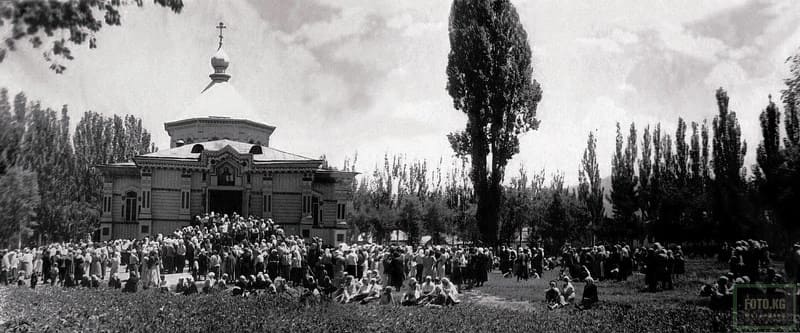
It was erected on the same site from wood in two years and consecrated on November 12, 1895. The new five-domed church with a bell tower was built of wood (a more stable structure during tremors). The main builders were the merchant family Maslikov, as well as the monk brothers from the island of Valaam, who served God in the Issyk-Kul Monastery.
The temple was an important educational center - its library contained more than 1000 books. For many years, especially after the revolution of 1917, it was used as an educational center, which housed a school, a girls' gymnasium and a higher educational institution; a gymnasium; a theater; a dance hall and even a coal warehouse.
Until the mid-1930s, the church belonged to believers, then it housed a children's sports school. In connection with this, the building was significantly rebuilt, the domes and bell towers were dismantled. In the 1930s, the temple was closed and rebuilt as a sports school.
Since 1986, restoration began, and in 1993 the temple was returned to believers. During the Great Patriotic War, the building was returned to believers as a church, but in 1957 it was again adapted for a Children's Sports School. In 1989, the Trinity Church of Karakol was restored.
After completion of construction, it was the tallest building in the city, with the top of the cross rising approximately 26 meters above the ground. The surviving basement, which has a square plan of the main volume, was used. The area of the new building increased due to an extension in the western part, preserving a wide entrance from the former Sadovaya Street.
Paths led to the church building at one time, along which, as well as along the perimeter of the site, grew elm, poplar, birch and spruce. The church has elongated proportions, large dimensions of the plan (35.5 x 18 meters) with a wall height of 5.1 meters made of wooden beams.
The brick plastered base of the building rests on a row of granite foundation blocks. The church has three naves, with one rectangular apse. The typological scheme of the main volume is traditional. It preserves the general principle of the construction of ancient Russian six-pillar churches, but unlike them, it has two pairs of columns, since the first pair in front of the apse is replaced by the walls of small square rooms - a sacristy and a sexton with a separate entrance.
Adjoining the west is a narthex, separated, like the main naves, from the main one. The spaces between the walls have wide rectangular openings. In front of the portal there is a narthex and two adjacent rooms, one of which has a wooden staircase for climbing up bell tower.
The church was crowned with five domes: the central one - on a powerful octagonal drum, cut through by large windows, and four smaller ones, placed diagonally from the main one. The dynamic and picturesque composition of the upper part of the building is completed by the tent-shaped roof of the belfry, located above the narthex.
The interior space is divided by four pillars into three naves, the middle of which is emphasized by a deep altar niche. The height of all three naves is 4.2 meters. The drums of the domes support cross-shaped pillars and pylons. The altar part was a fresco painting, now completely lost.
The relics of three martyrs - Andronicus, Tarakh and Prom are kept on the territory of the church, which is why the church is called the Church of the Holy Trinity. Among the decorations inside the church are several icons, including some that were rescued from the monastery at Svetly Myz (where the evangelist Saint Matthew is believed to be buried), such as a version of the Tikhvin Icon of the Mother of God (an icon believed to be the work of another evangelist, Saint Luke, although art historians suggest it was painted by a Russian artist sometime around 1300), and a copy of the Holy Trinity icon by Andrei Rublev (who lived in the XIIIth century). July 9 (although the church, which still uses the Julian calendar, still calls it June 26) was a special day in Karakol because it was Remembrance Day, or Memorial Day, of the Tikhvin Icon.
A special service was held, and even a bus from Bishkek brought in believers who wanted to attend the festivities. The Holy Trinity Church is a historical and cultural monument of national significance.
Geographic coordinates of Holy Trinity Church: N42°29'20 E78°23'41
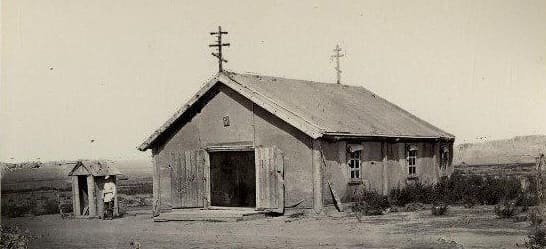
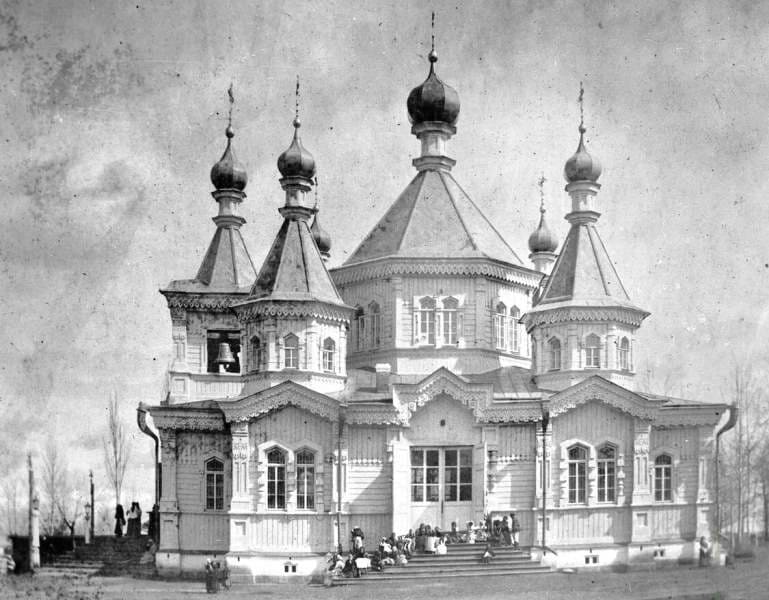


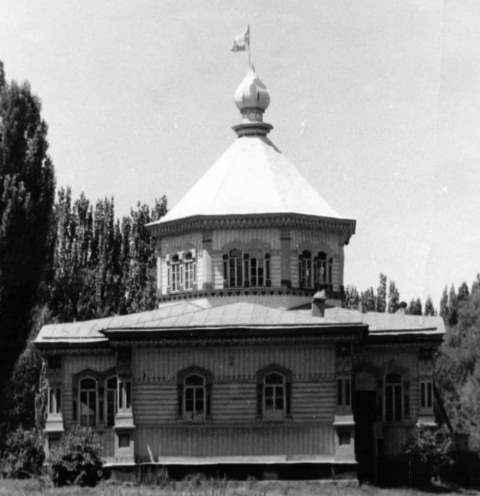
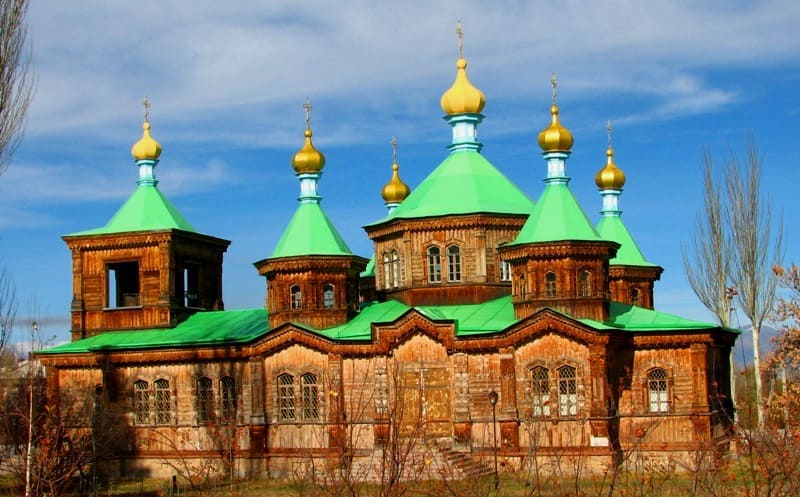

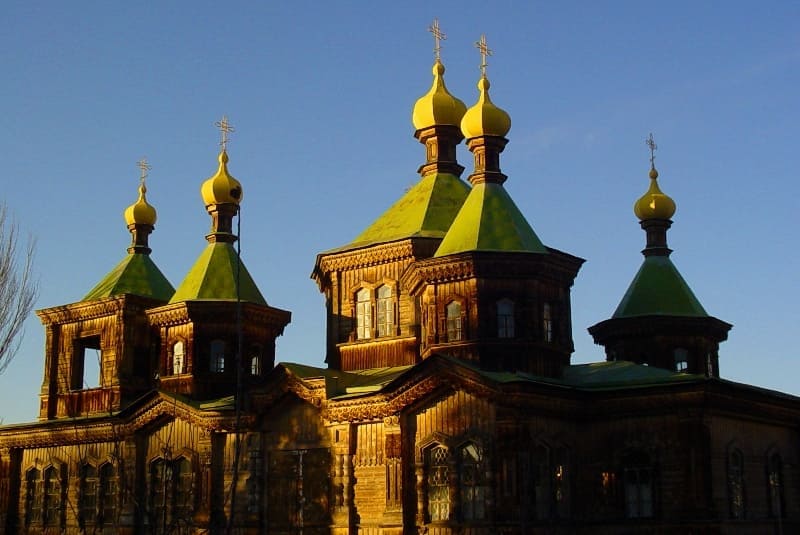


Authority;
Architectural description of the monument made by S.Ya. Peregudova.
Photos by:
Alexander Petrov.
https://visitkarakol.com
https://foto.kg
https://humus.livejournal.com/3117232.html







